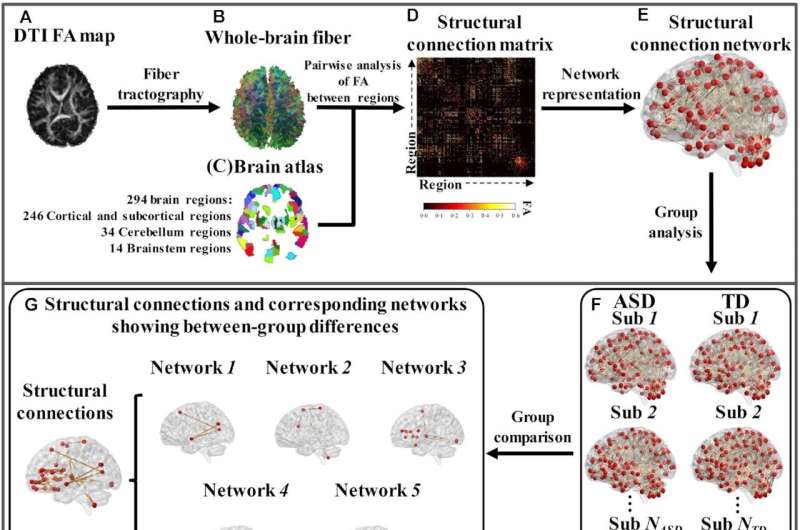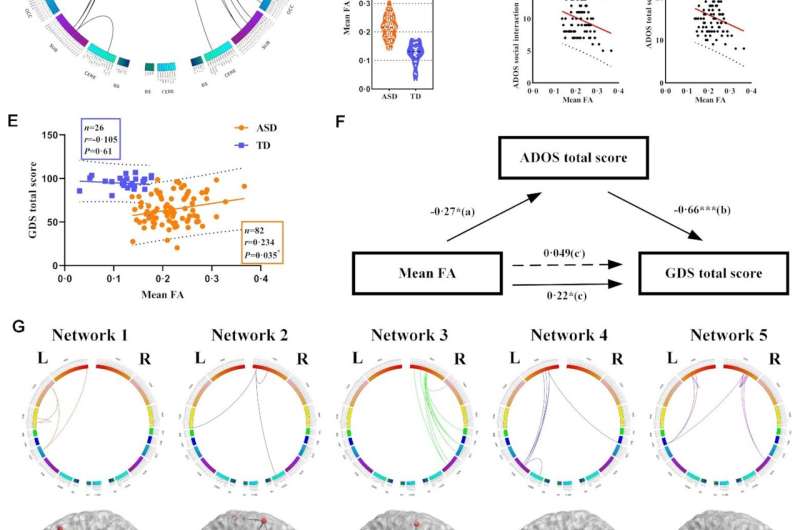This article has been reviewed according to Science X's editorial process and policies. Editors have highlighted the following attributes while ensuring the content's credibility:
fact-checked
proofread
New brain connectivity biomarker offers accurate early diagnosis of autism spectrum disorder

In a recent article published in Psychoradiology, researchers from Peking University and University of Electronic Science and Technology of China, identified specific alterations in brain structural connectivity that might act as an early diagnostic marker for autism spectrum disorder (ASD) in young children.
The study employed Diffusion Tensor Imaging (DTI) to explore the diagnostic gap in precision medicine standards and analyzed brain connectivity differences between ASD and typically developing (TD) children across three Chinese cities.
By generating a connection matrix for each participant, the team discerned patterns distinguishing ASD from TD. Notably, 33 distinct structural connections, predominantly in the frontal cortex, exhibited increased Fractional Anisotropy (FA) in children with ASD. This enabled the classification of ASD from TD children with an impressive accuracy of 96.77% in the primary dataset.
This accuracy remained high, at 91.67% and 88.89%, when validated against two independent datasets. These identified frontal connections could be categorized into five networks associated with functions such as memory, motor control, language, social recognition, and reward. One particular network connected decision-making regions, like the orbitofrontal cortex, to areas vital for social processing—a function frequently affected in ASD individuals.

Interestingly, the study found an inverse correlation between elevated FA values in these connections and autism symptom severity, implying that higher FA values might be linked to milder symptoms due to potential compensatory brain mechanisms. Distinctively, this study's methodology, focusing on DTI-derived FA values, showcased better diagnostic accuracy than previous works centered on white matter fiber tracts. However, the study wasn't without limitations.
Concentrating on the age range of 3.5–6 years meant potential developmental changes in structural variances as children grow were overlooked. Furthermore, the question remains whether these structural alterations are unique to ASD or might appear in other developmental disorders. Lastly, the two validation datasets, albeit supportive, were limited in size.
In conclusion, this research represents a pivotal advancement in early ASD diagnosis. By pinpointing specific neural connections, particularly within the frontal cortex, the study introduces a potential biomarker. This holds the promise of transforming personalized treatments and enhancing clinical care for young children diagnosed with autism.
More information: Xi Jiang et al, A brain structural connectivity biomarker for autism spectrum disorder diagnosis in early childhood, Psychoradiology (2023). DOI: 10.1093/psyrad/kkad005


















